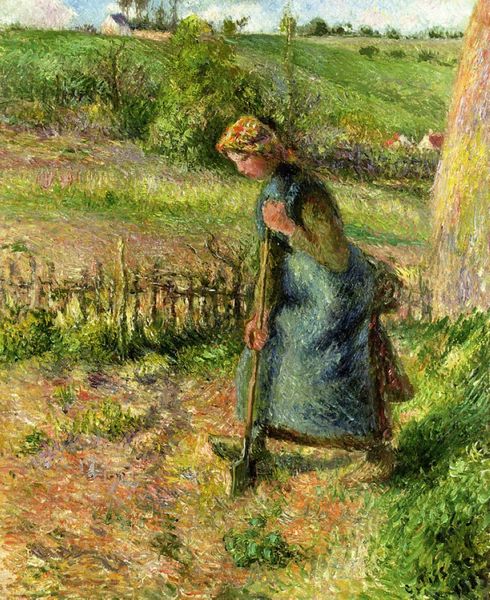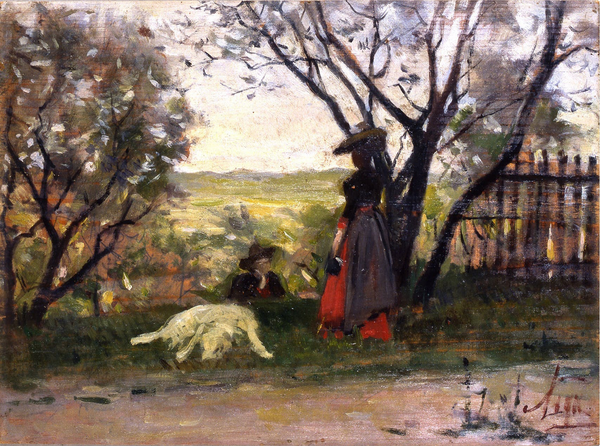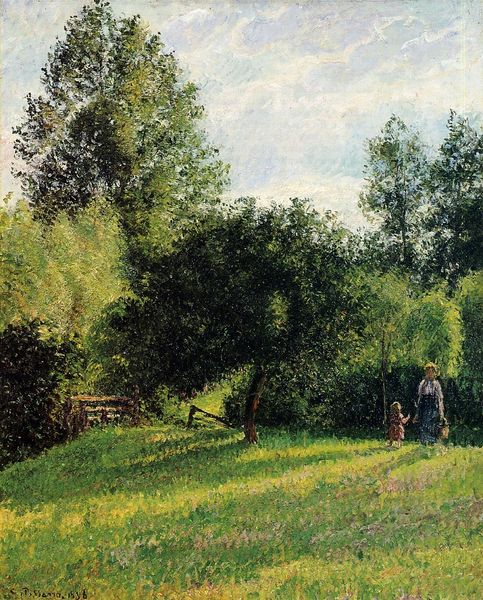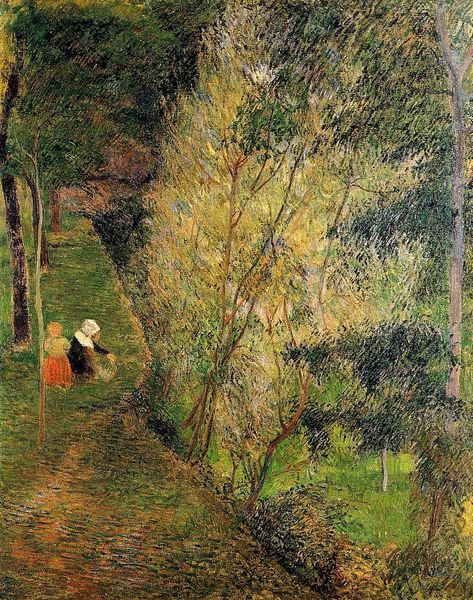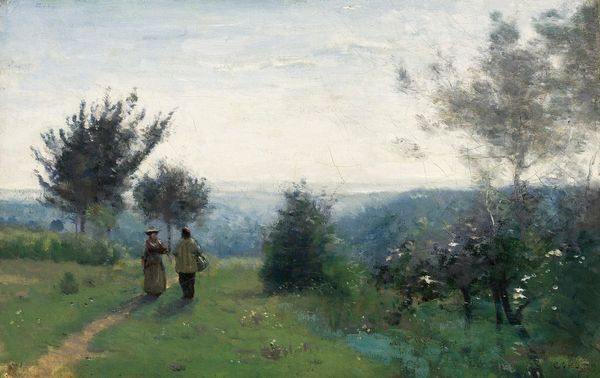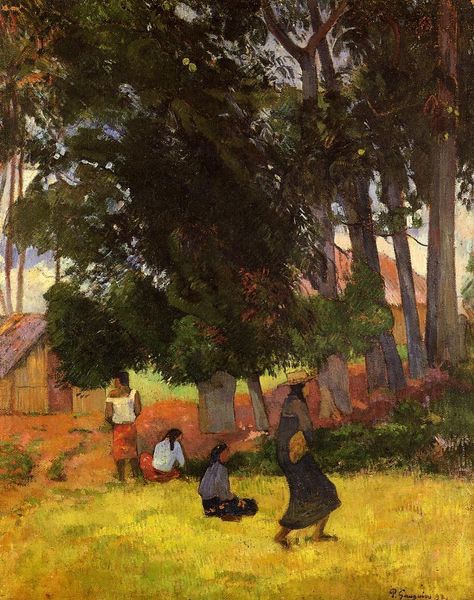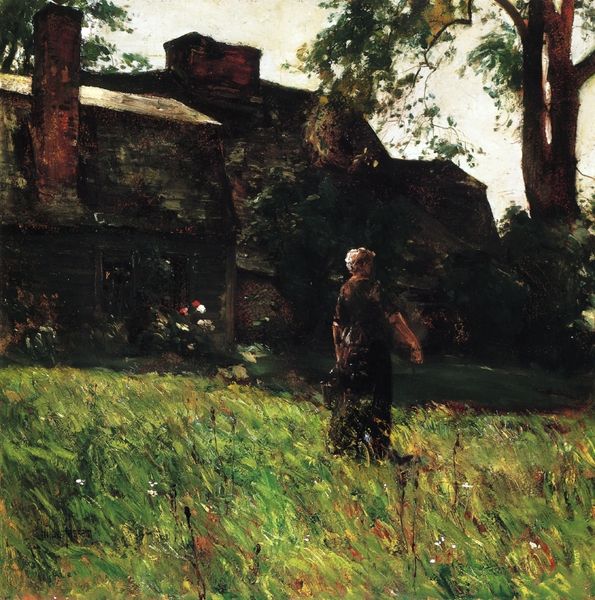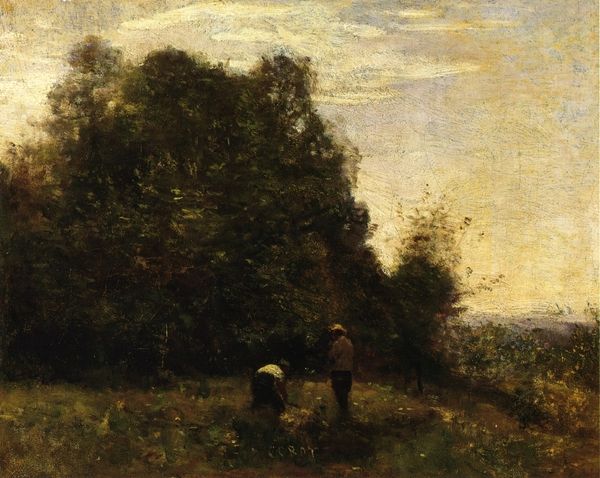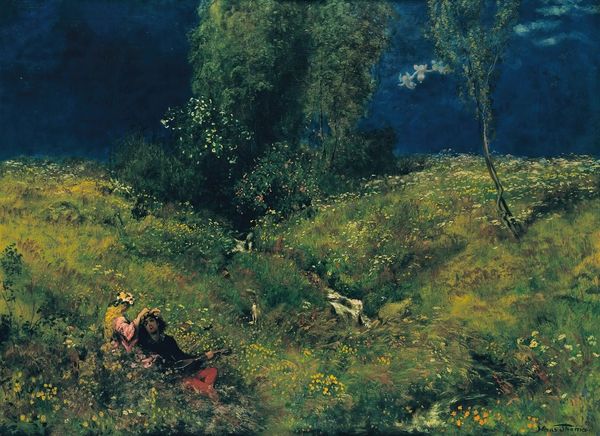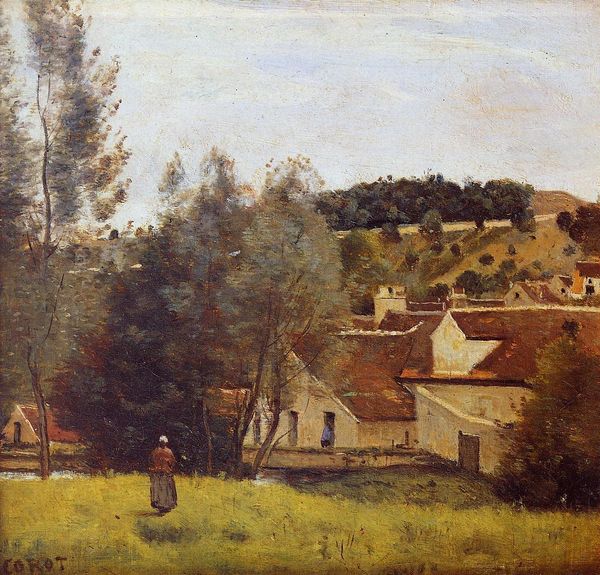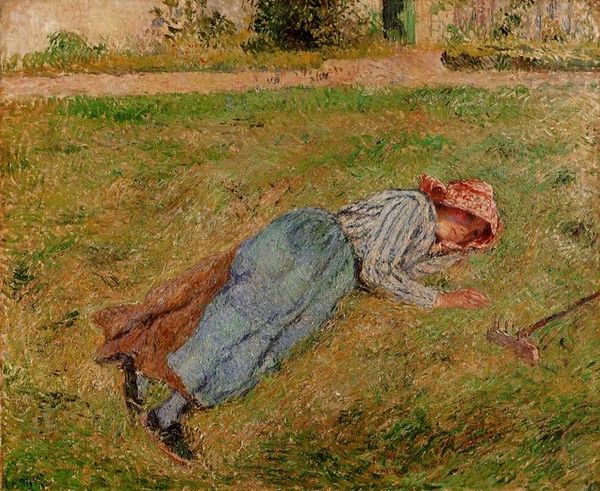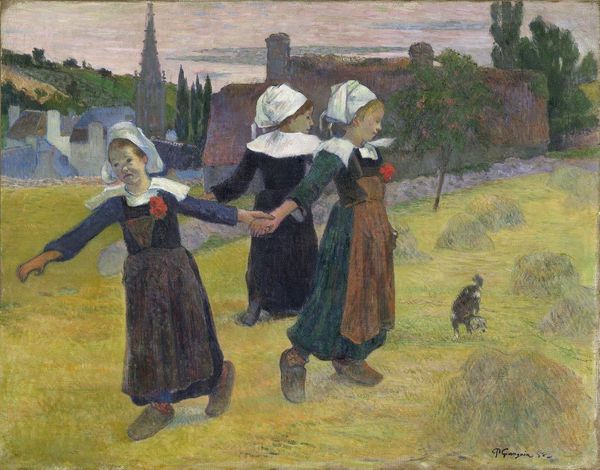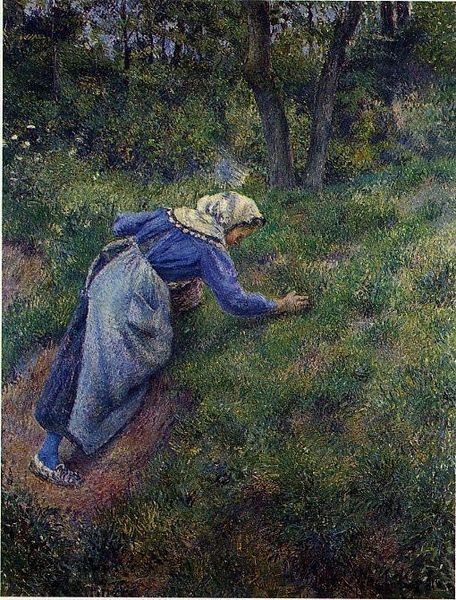
painting, plein-air, oil-paint
#
painting
#
impressionist painting style
#
plein-air
#
oil-paint
#
landscape
#
impressionist landscape
#
figuration
#
oil painting
#
genre-painting
#
post-impressionism
#
nature
Copyright: Public domain
Curator: What an evocative landscape! Paul Gauguin's "The First Flowers," painted in 1888, offers a glimpse into rural life. Editor: Yes, there is something so idyllic and dreamlike in this painting. Yet, underneath the picturesque, I also see the harsh realities of labor, the women forever bound to this land, repeating cycles of servitude. Curator: I see your point, but I'm drawn to the masterful use of color. The vibrant greens, punctuated by the earthy tones of the buildings in the background, create a rhythmic composition. Note how he contrasts the light and shadow, animating the pastoral scene before us. Editor: The painting highlights a specific historical reality: it's the late 19th century, and these Breton women's identities are so intrinsically tied to their roles as rural workers, contributing to a subsistence economy. They are captured in the labor of reaping nature’s bounty. The work appears strenuous. Curator: Consider Gauguin's technique. The short, deliberate brushstrokes are classic Impressionist, of course, yet there’s something more expressive here, a pushing past mere representation toward emotional response to the land. Note that in his painting, these techniques offer a structural harmony, tying the figures back to nature in an intricate dialogue. Editor: Perhaps we are both correct, in a sense. His move away from Impressionism to something more Symbolist seems, at the very least, nascent here. His construction does indeed evoke something beautiful. But what, ultimately, does this beauty ask us to consider? Gauguin here gives us beauty alongside his colonialist perspective, a tension, one must always keep in mind when viewing his works. Curator: A crucial tension indeed. As always, this act of viewership creates further meaning, making his piece resonate far beyond 1888. Editor: Absolutely. Considering all we have spoken about, this art historical moment urges us to look both inwards, at aesthetics and intention, and outwards, at the social landscape and its inequalities.
Comments
No comments
Be the first to comment and join the conversation on the ultimate creative platform.
